June 2025
Kruger National Park
Share:
Kruger National Park: June 2025
June has revealed a drier, more open environment, offering clearer views of animals as vegetation thins out. It is a favourite for many, with perfect daytime temperatures and skies so crisp and blue they hardly seem real. The dusty, dry plains are creating spectacular amber sunsets that transform to a deep burgundy before the stars emerge, one by one, to create the most dramatic scene overhead, humbling all that get lost in its beauty. Water has become scarcer, drawing wildlife to permanent water sources and increasing chances of incredible sightings.
A Sightings Snapshot for June follows:
Lions
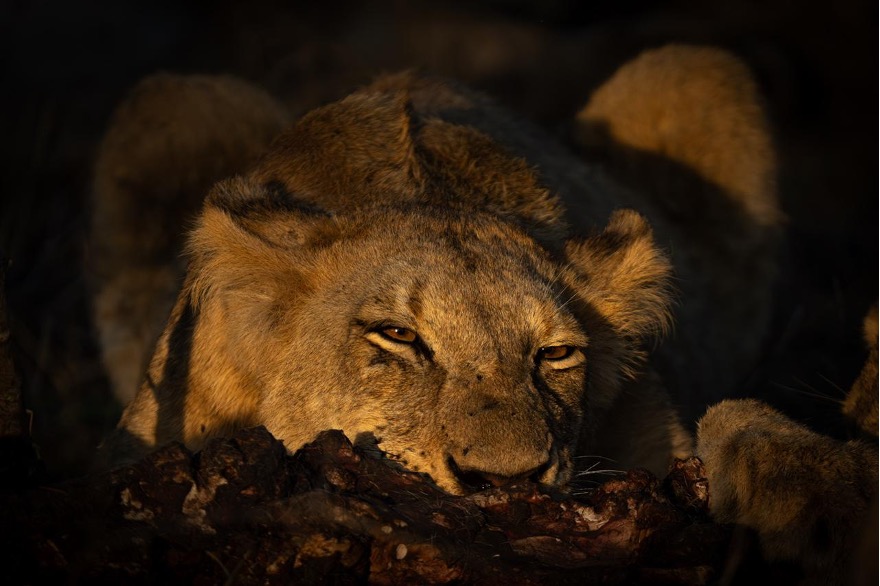
- This month delivered exceptional lion sightings, beginning with the Shish Pride feeding on a fully grown male giraffe. All 14 members were present, and the growing cubs—now nearly adult-sized—were a reassuring sight. Their increasing size means they’re far less vulnerable to infanticide should a new male attempt a takeover. While this bodes well for the younger lions, the subadult males will soon face the natural next step: being pushed out of the pride. This typical dispersal behaviour prevents inbreeding and helps maintain the long-term genetic health of the pride.
- One afternoon near the N’wanetsi River, we heard the distant calls of zebra and paused to listen more closely. Just as I turned off the engine, a sudden burst of snarling and throaty, rasping growls echoed from the river below. We quickly drove toward the sound and came upon a striking sight—the Mananga Pride sprawled over the striped body of a zebra. Two lionesses still clamped their jaws around its throat, while the cubs squabbled noisily, letting out harsh, grating cries as they jostled and snapped at each other, each trying to claim a piece of the kill. They demolished the entire zebra that afternoon, and by morning, with the help of the crocodiles in the river, there was not even a bone to be seen.
- Another afternoon on the western basalt plains, we found the Chava Pride resting in the tall grasses. As the sun dipped toward the horizon, the distant sounds of a large buffalo herd stirred interest among some of the lionesses. Following the noise, they came upon over a hundred buffalo. With a sudden charge, they caused chaos, managing to split the herd and isolate a lone bull. Despite several attempts, the lions couldn’t bring the powerful animal down. Darkness set in, and mindful of the nearby cubs and not wanting to interfere with the hunt, we left the area. At first light, we returned, finding only a network of lion and buffalo tracks. Carefully following the trail and periodically stopping to listen for feeding sounds, we scanned the bush in silence. Suddenly, one of the trackers turned, grinning— “There they are!” We had found the Chava Pride again, gathered around the remains of a buffalo carcass. All 12 cubs were present, along with the three Sonop males. The females and cubs had clearly already fed—many of the cubs were caked in a dark mess of blood and soil, nearly black with the aftermath of their feast. It was a truly unforgettable sight.
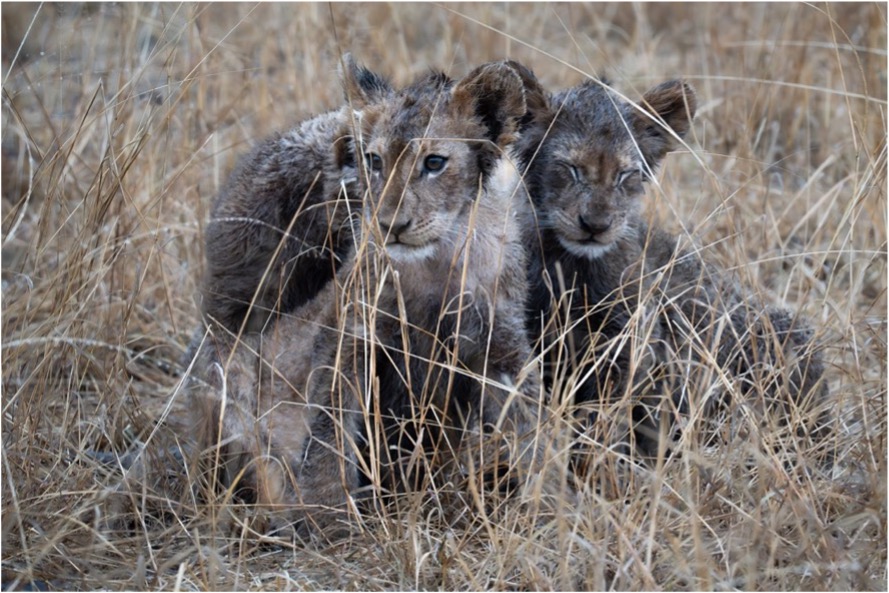
- A young, unnamed, male lion has been seen just north of the lodges. On two occasions he was seen with a single lioness that we suspect could be one of the Shish lionesses.
- One evening near the lodge, six large male lions were seen marching east along the H6. Their unified stride was striking. After crossing the road, they veered north into the bush and disappeared from view. Their arrival comes at a pivotal time. With the Trichardt males no longer present, both the Mananga and Shish Prides have been left without dominant males, resulting in unpredictable movements. A strong coalition like this could bring much-needed stability—if they choose to stay.
Leopards
- Leopard activity surged in the final two weeks of the month, with several sightings of the Dumbana leap. On multiple occasions, they were found finishing off an impala carcass hoisted in a tree. One particularly notable sighting involved the Dumbana female and her daughter leaving the young male to feed alone on the remains of a young impala. Below, two hyenas waited patiently for scraps. The scene intensified when a large, but shy, unknown male leopard attempted to sneak in unnoticed. He was eventually spotted. As the young Dumbana male fed, the carcass slipped from the branch and fell to the ground. He then descended the tree with grace, pausing now and then to growl at the intruder before making one final leap into the long grass. The unknown male quickly approached the base of the tree in search of leftovers, but the hyenas had already seized everything and dashed off.
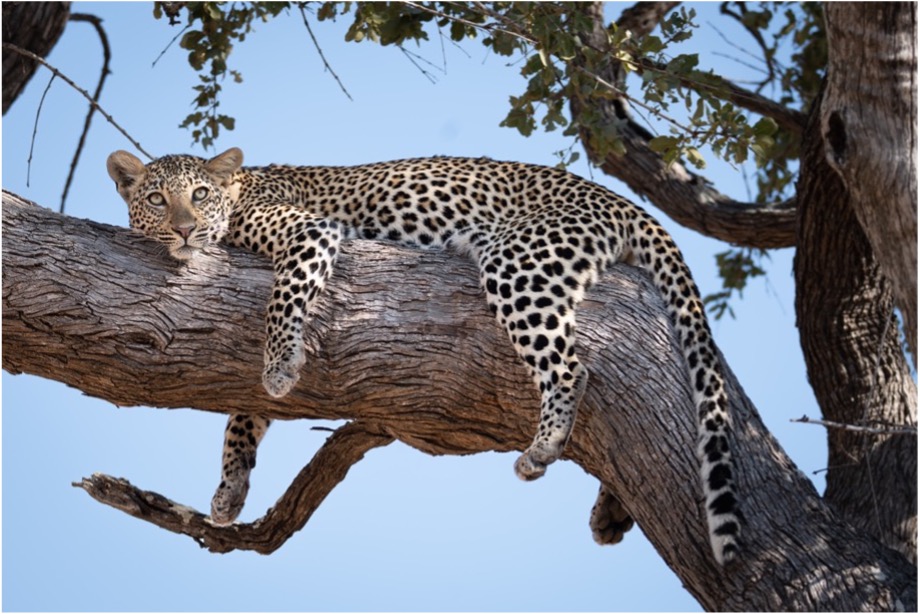
- Separately, the Zamani male was also observed having hoisted an impala ewe into a large leadwood tree near the S41.
- Nhlanguleni female has been more secretive this month, with only one sighting recorded of her moving from the central depression into some long grass.
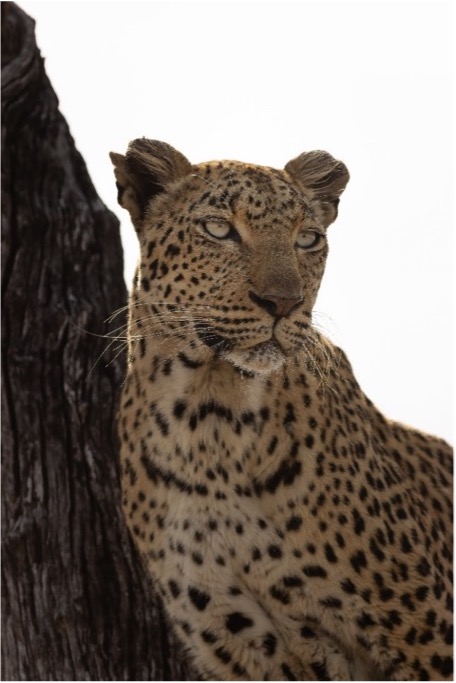
- The regal Lebombo male continues to rule over the southern Lebombo mountains, often passing along the outskirts of the lodge as he patrols his territory, marking it with scent to assert his presence to rival males. His preferred resting spots appear to be the reed beds along the N'wanetsi River and its adjacent tributaries.
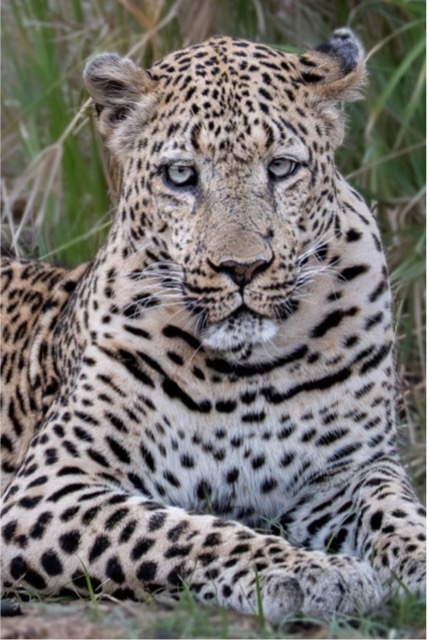
- Fascinating interactions unfolded between the Lebombo male and the young Dumbana male toward the end of the month. One morning, the Lebombo male—who could very well be the father of the Dumbana youngster—was found lying at the base of a large knobthorn tree. Suspended above him was the partially eaten carcass of an impala. Upon closer inspection, we discovered the young Dumbana male just a few meters away, concealed within a guarri thicket. When we returned to the scene in the afternoon, both leopards were in the tree. The Lebombo male was sprawled across the carcass, while the young Dumbana male perched higher up among the thinner branches. Both were snarling and hissing at each other in a tense standoff. It is speculated that the young male may have been the one to make the kill and hoist the impala into the tree, only for the dominant Lebombo male to come upon the scene and assert his authority. What was most surprising, however, was that later in the day, the Lebombo male was once again resting at the base of the tree while the young Dumbana male was feeding—an unexpected turn that reminds us how much there is still to learn about the complex dynamics of leopard behaviour.
Cheetahs
- A single mother and two cubs were spotted on the S41.
African wild dogs
- One morning on the way from our staff village, a pack of 11 wild dogs was seen trotting up the H6, including a heavily pregnant adult female. Denning usually takes place from May to July, coinciding with the dry season to boost pup survival. While most packs in this region typically den in Mozambique or southwest of our concession—where large termite mounds are more common—we're hopeful that, given how far along this female appears to be, she may choose a site nearby.
Spotted hyenas
- Spotted hyena sightings have been both frequent and dramatic this month. A particularly intense encounter mid-month involved around 15 hyenas vocalizing wildly and chasing two others—one with a bloody neck wound, likely the result of a territorial clash between the regularly seen Ntibistane Clan and the Granophyre Clan. The atmosphere was electric with woops, snickers, eerie laughter, and deep grumbles from dominant females. In addition, hyenas have been regular visitors at lion and leopard kills, often arriving with uncanny precision—nose held high, guided by their remarkable sense of smell.
Elephants
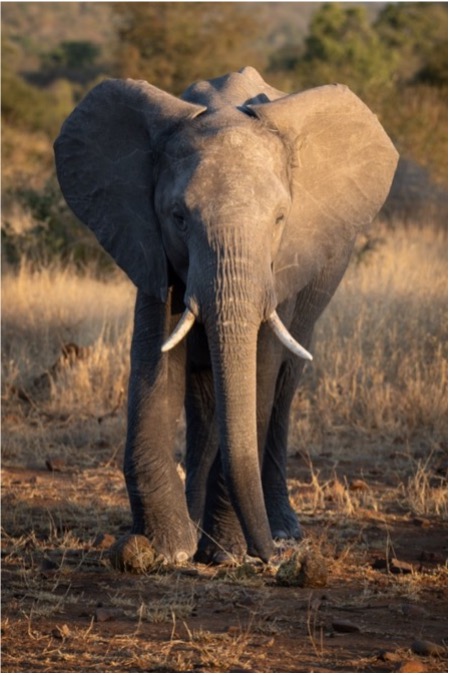
- This month, the bush has visibly dried out. The elephants are actively transitioning from feeding on grass to foraging for the last remaining leaves at the tops of trees, often using their strength to push the trees over. If the roots are torn from the ground in the process, it's even better for them, as it exposes the nutrient-rich tissues beneath the surface that they can feed on. They've also begun their winter routine—heading to the mountains in the evenings and returning to the river and nearby plains during the heat of the day.
Buffalos
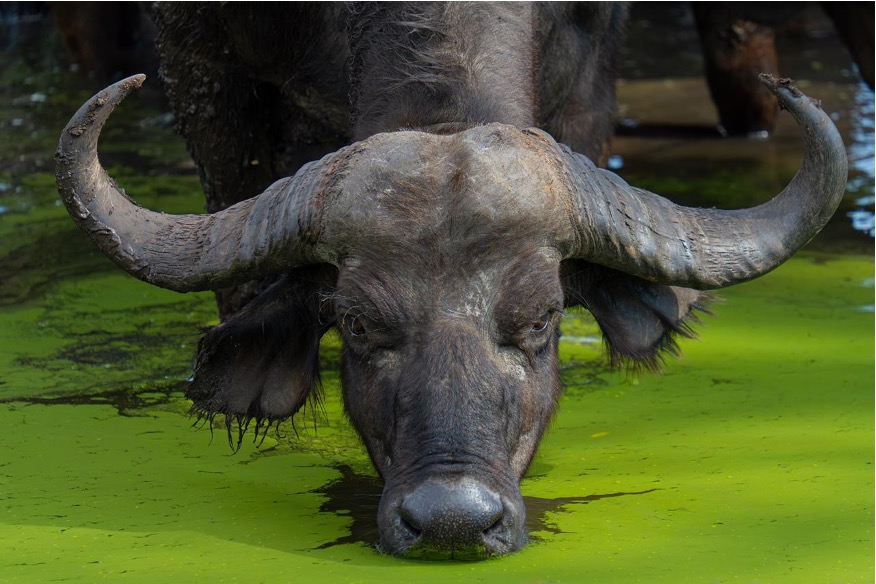
- A herd, over 1 000 strong, has been roaming the grasslands in the north-western reaches of our concession. Despite the gradual decline in grass quality, the animals remain in good condition. Scattered among the sea of black hides, the occasional soft, rust-brown calf stands out—a gentle reminder of the new generation.
- Their low, cow-like groans carry for several kilometres across the plains, and in recent weeks, they've drawn the attention of the Chava Pride. On a few occasions, the lions have managed to isolate a weaker individual, providing valuable sustenance to the growing cubs and keeping the Sonop males well-fed this month.
Plains game
- This month has seen a noticeable increase in zebra sightings, with large groups of up to 50 individuals gathering on the open plains. Among them, wildebeest, warthogs, impala, and giraffe dot the landscape, creating a vibrant mosaic of wildlife. As water becomes more scarce, the movement of animals has become more predictable, with well-worn game paths clearly visible as they travel to and from the remaining water sources each day.
Rare animals and other sightings
- This month brought a welcome surprise with sightings of several rarely seen species: African civet, serval, white-tailed mongoose, and Sharpe’s grysbok. All are small, elusive mammals that often go unnoticed—especially during the rainy season, when the grass grows tall enough to conceal even a buffalo. Their appearance is a reminder of the incredible diversity within the area, and how much remains hidden just beyond view.
Birds
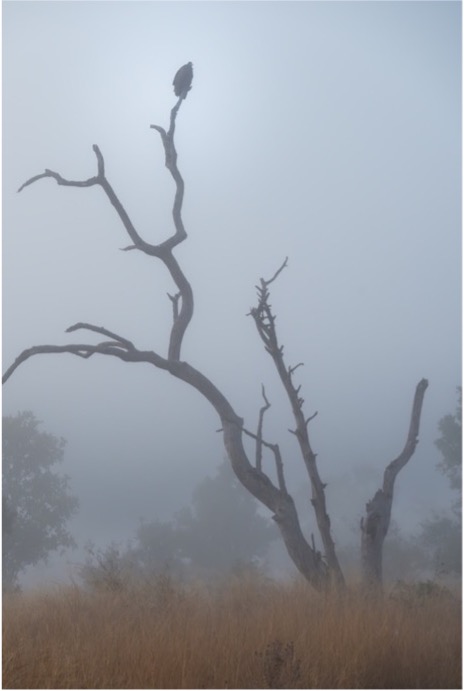
- Bird activity has been vibrant this month. A black stork was seen soaring gracefully over Pony Pan—a rare and special sight. A controlled burn west of the central depression attracted an impressive mix of raptors and scavengers, including eagles, vultures, black-winged kites, starlings, rollers, and hornbills, all taking advantage of insects and small mammals caught by the flames. Pearl-spotted owlets have been especially vocal at dusk, their calls echoing through the trees, while small flocks of around 50 quelea have been seen fluttering through the grasslands in tight formation.